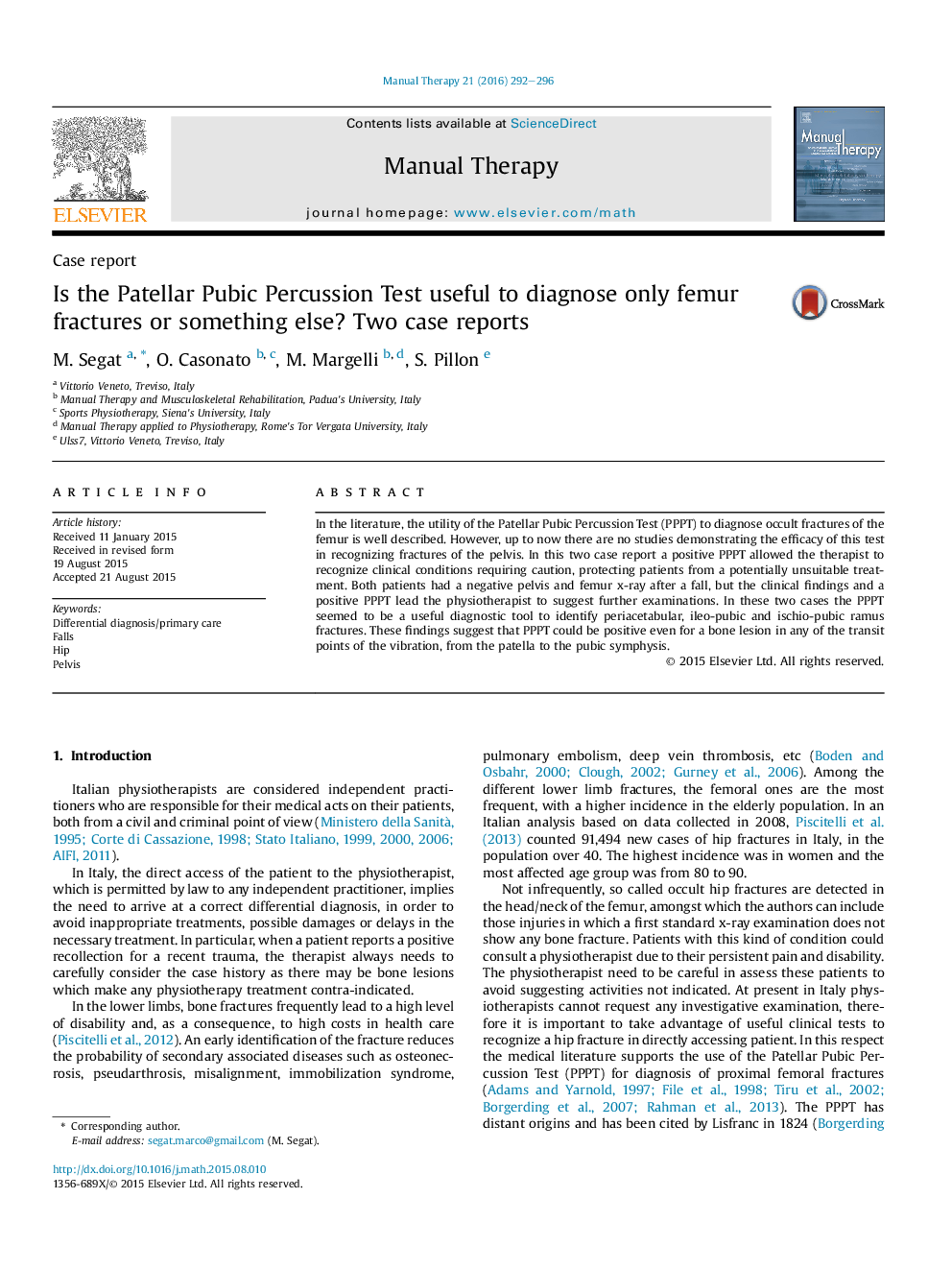| Article ID | Journal | Published Year | Pages | File Type |
|---|---|---|---|---|
| 5864646 | Manual Therapy | 2016 | 5 Pages |
â¢Importance of differential diagnosis for physiotherapist's assessment.â¢PPPT as an easy and economic screening tool.â¢PPPT could be positive for the interruption of vibration in any of the transit point.â¢Need for studies demonstrating the efficacy of PPPT in recognizing pelvic fractures.
In the literature, the utility of the Patellar Pubic Percussion Test (PPPT) to diagnose occult fractures of the femur is well described. However, up to now there are no studies demonstrating the efficacy of this test in recognizing fractures of the pelvis. In this two case report a positive PPPT allowed the therapist to recognize clinical conditions requiring caution, protecting patients from a potentially unsuitable treatment. Both patients had a negative pelvis and femur x-ray after a fall, but the clinical findings and a positive PPPT lead the physiotherapist to suggest further examinations. In these two cases the PPPT seemed to be a useful diagnostic tool to identify periacetabular, ileo-pubic and ischio-pubic ramus fractures. These findings suggest that PPPT could be positive even for a bone lesion in any of the transit points of the vibration, from the patella to the pubic symphysis.
